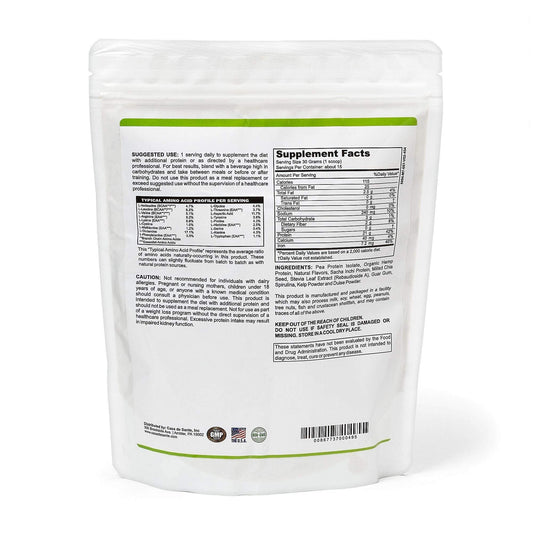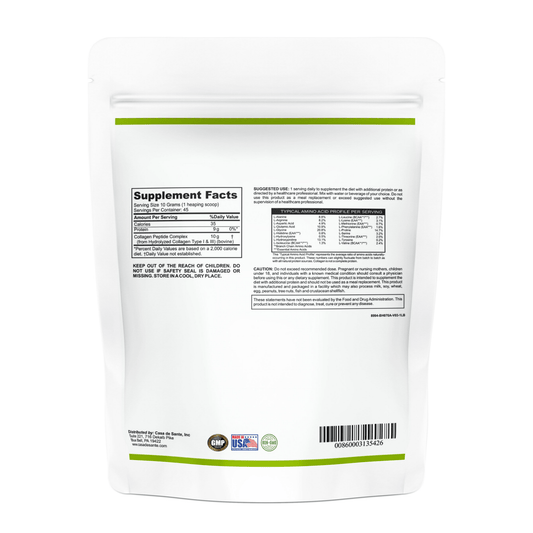Exploring the Connection Between Sjögren's Disease and Dysautonomia: Symptoms and Management Strategies
Sjögren's Disease and Dysautonomia are two conditions that often overlap, leading to a complex web of symptoms that can be challenging to manage. Sjögren's primarily affects the body's moisture-producing glands, causing dryness in the eyes and mouth, while Dysautonomia disrupts the autonomic nervous system, affecting functions like heart rate and blood pressure. Understanding how these two conditions interact can help patients find better management strategies and improve their quality of life. In this article, we'll explore the symptoms, diagnosis, and management of Sjögren's Disease and Dysautonomia, along with the latest research and insights into living with these conditions.
Key Takeaways
- Sjögren's Disease often leads to Dysautonomia, impacting the autonomic nervous system.
- Common symptoms include dry mouth and eyes, fatigue, and heart rate irregularities.
- Diagnosis can be tricky due to overlapping symptoms; specialized testing is often needed.
- Management includes lifestyle changes, medications, and sometimes physical therapy.
- Awareness and advocacy are crucial for improving treatment options and patient support.
Understanding Sjögren's Disease and Dysautonomia
Overview of Sjögren's Disease
Sjögren's syndrome is an autoimmune disorder that primarily affects the moisture-producing glands, leading to dry eyes and dry mouth. However, it's way more than just dryness; it's a systemic disease that can impact various organs and systems throughout the body. For a long time, it was thought that Sjögren's mainly targeted the lacrimal and salivary glands, causing keratoconjunctivitis sicca. Now, we know it can mess with the central, peripheral, and autonomic nervous systems. It's not just about the dryness; it's about how this disease can throw your whole system out of whack.
What is Dysautonomia?
Dysautonomia is a condition where the autonomic nervous system (ANS) doesn't work the way it should. The ANS controls all sorts of automatic functions, like heart rate, blood pressure, digestion, and even body temperature. When it's not functioning correctly, you can experience a wide range of symptoms. Think of it like this: the ANS is the body's autopilot, and when it malfunctions, things can get pretty bumpy.
Here are some of the things the ANS controls:
- Heart rate
- Blood pressure
- Digestion
- Body temperature
Dysautonomia can be caused by a number of things, including autoimmune diseases, genetic conditions, and even certain medications. Sometimes, the cause is unknown. The symptoms can vary widely from person to person, making it a tricky condition to diagnose and manage.
The Link Between Sjögren's and Dysautonomia
So, how are Sjögren's and dysautonomia connected? Well, Sjögren's can cause inflammation and damage to the nervous system, which can then lead to dysautonomia. It's thought that Sjögren's is actually one of the main causes of autonomic neuropathy, second only to diabetes. Some research even suggests that people with idiopathic dysautonomia (meaning, dysautonomia with no known cause) who also have dryness symptoms might have early-stage Sjögren's antibodies, even if they haven't been officially diagnosed with Sjögren's yet. It's all about the immune system going haywire and attacking the nerves. This can lead to a whole host of problems, especially when it comes to those automatic bodily functions we rely on every day.
Symptoms of Sjögren's Disease and Dysautonomia
Common Symptoms of Sjögren's Disease
Okay, so Sjögren's is known for the classic dry eye and dry mouth combo. But it's way more than just that. Think of it as an autoimmune condition that can mess with your whole body. The hallmark symptoms are definitely dryness in the eyes and mouth, but it doesn't stop there.
- Persistent dry cough
- Fatigue that just won't quit
- Joint pain and stiffness
It's easy to dismiss these symptoms as just being tired or having allergies, which is why it often takes a while to get a proper diagnosis. People might think they just need more sleep or some eye drops, not realizing it could be something bigger going on.
Dysautonomia Symptoms in Sjögren's Patients
Dysautonomia, when it shows up with Sjögren's, can really throw a wrench into things. It's like your body's automatic systems are on the fritz. Heart rate and blood pressure can go haywire, leading to dizziness or even fainting.
- Lightheadedness and dizziness, especially when standing up
- Heart palpitations or a racing heart
- Digestive issues like nausea, constipation, or diarrhea
Overlap of Symptoms and Diagnosis Challenges
Here's where it gets tricky: many symptoms of Sjögren's and dysautonomia overlap. Fatigue? Check. Dizziness? Check. This overlap makes it tough to pinpoint exactly what's going on. It's like trying to solve a puzzle where some of the pieces fit in multiple places.
| Symptom | Sjögren's Disease | Dysautonomia | Overlap |
|---|---|---|---|
| Fatigue | Yes | Yes | Yes |
| Dry Eyes | Yes | No | No |
| Dry Mouth | Yes | No | No |
| Dizziness | Sometimes | Yes | Yes |
| Joint Pain | Yes | No | No |
| Heart Palpitations | No | Yes | No |
It can take, on average, about three years to get an accurate diagnosis. That's a long time to be dealing with these issues without knowing exactly what's causing them.
Diagnosing Dysautonomia in Sjögren's Patients
Initial Assessment Techniques
Okay, so you suspect dysautonomia in a Sjögren's patient. Where do you even start? Well, the first step is usually a thorough review of the patient's medical history and a physical exam. Doctors will look for those classic signs like lightheadedness, palpitations, and fatigue. Paying close attention to how symptoms correlate with changes in posture or activity levels is key.
- Checking blood pressure and heart rate while lying down, sitting, and standing (orthostatic vitals) is a simple but important test.
- A questionnaire about symptoms can help quantify the patient's experience.
- Ruling out other conditions that can mimic dysautonomia is also part of the initial assessment.
It's easy to dismiss symptoms as "just anxiety" or "part of getting older," but it's important to take patient complaints seriously, especially when Sjögren's is already in the picture. Early detection can make a big difference in managing the condition.
Advanced Diagnostic Tools
If the initial assessment points toward dysautonomia, it's time to bring out the big guns. Advanced testing can help confirm the diagnosis and pinpoint the specific type of autonomic dysfunction. Here are some common tests:
- Tilt Table Test: This is pretty much the gold standard. You're strapped to a table that tilts you upright to see how your blood pressure and heart rate respond to gravity. It's not exactly a fun experience, but it provides valuable data.
- Sweat Testing (QSART): This measures how much you sweat in response to a stimulus. It can help identify problems with the sympathetic nervous system, which controls sweating.
- Autonomic Reflex Screen: This involves a series of tests that assess different aspects of autonomic function, such as heart rate variability and pupillary responses.
Importance of Multidisciplinary Approach
Diagnosing dysautonomia in Sjögren's patients isn't a one-person job. It really needs a team effort. You've got rheumatologists managing the Sjögren's, neurologists specializing in the nervous system, and cardiologists keeping an eye on the heart. And don't forget the primary care physician, who's often the point person for coordinating everything. Individuals with small fiber neuropathy can also benefit from this approach.
Having different specialists involved helps make sure nothing gets missed and that the patient gets the most complete care possible. It's all about working together to figure out what's going on and come up with a plan that addresses all the patient's needs.
Managing Dysautonomia in Sjögren's Syndrome

Lifestyle Adjustments for Symptom Relief
When dealing with dysautonomia related to Sjögren's, small changes can make a big difference. It's all about finding what works for you and sticking with it.
- Staying hydrated is key. Aim for consistent fluid intake throughout the day.
- Compression stockings can help with blood pressure regulation, especially if you experience lightheadedness when standing.
- Adjusting your diet, like increasing salt intake (under medical guidance), can also help manage blood pressure issues.
Listen to your body. Rest when you need to, and don't push yourself too hard. It's a marathon, not a sprint.
Medications and Treatment Options
Medications can play a significant role in managing dysautonomia symptoms. It's important to work closely with your doctor to find the right combination. For example, some people find relief with beta-blockers to control heart rate, while others benefit from medications that help regulate blood pressure. Immunomodulatory drugs may provide additional support by modulating immune responses and reducing nerve damage. Managing Sjögren's symptoms often involves a multi-faceted approach.
Role of Physical Therapy and Exercise
Physical therapy and exercise can be surprisingly helpful. Gentle exercises like swimming or recumbent biking can improve cardiovascular health without putting too much stress on your system. Physical therapy can also teach you techniques to manage symptoms like dizziness and fatigue. It's about finding a balance and gradually increasing your activity level.
Here's a simple exercise progression:
- Start with short, low-intensity sessions.
- Gradually increase the duration and intensity as tolerated.
- Focus on exercises that improve balance and coordination.
Research and Future Directions
Current Studies on Sjögren's and Dysautonomia
Research exploring the connection between Sjögren's and dysautonomia is ongoing, and it's really starting to pick up steam. Scientists are working to understand the underlying mechanisms that link these two conditions. A lot of studies are focused on identifying specific biomarkers that could help with earlier diagnosis. There's also a push to figure out how the immune system goes haywire in Sjögren's and how that affects the autonomic nervous system. It's a complex puzzle, but researchers are making progress.
- Investigating the role of specific antibodies in causing autonomic dysfunction.
- Analyzing genetic factors that may predispose individuals to both conditions.
- Studying the impact of inflammation on nerve function.
Potential New Treatments
With a better understanding of the link between Sjögren's and dysautonomia, the hope is to develop more targeted and effective treatments. Current research is exploring several avenues, including immunomodulatory therapies that could help calm down the immune system and reduce inflammation. There's also interest in developing medications that can specifically target the autonomic nervous system to improve its function. It's all about finding ways to alleviate symptoms and improve the quality of life for people living with these conditions.
New treatments are on the horizon, but it's going to take time and a lot of effort to get there. The good news is that there are many dedicated researchers working hard to make a difference.
Advocacy and Awareness Initiatives
Raising awareness about Sjögren's and dysautonomia is super important. The more people know about these conditions, the better the chances of early diagnosis and access to appropriate care. Advocacy groups play a big role in educating the public, supporting patients, and pushing for more research funding. These initiatives help to reduce the stigma associated with chronic illness and ensure that patients have a voice in shaping healthcare policies. It's a team effort, and every bit of awareness helps.
- Patient advocacy groups organizing awareness campaigns.
- Researchers sharing findings at conferences and in publications.
- Healthcare providers educating themselves and their patients.
Impact on Quality of Life
Daily Challenges Faced by Patients
Living with both Sjögren's and dysautonomia can really throw a wrench into daily life. It's not just about dry eyes or feeling a little lightheaded; it's a constant juggling act of managing unpredictable symptoms. Simple things most people take for granted, like going to the grocery store or attending a social event, require careful planning and often result in significant fatigue. The combination of dryness, pain, and autonomic dysfunction can make even basic tasks feel like climbing a mountain.
- Difficulty concentrating due to brain fog.
- Needing frequent rest breaks during activities.
- Sensitivity to light and temperature changes.
Psychosocial Effects of Chronic Illness
Chronic illnesses like Sjögren's and dysautonomia don't just affect the body; they can take a toll on mental and emotional well-being. The constant battle with symptoms, the uncertainty of flares, and the limitations they impose can lead to feelings of isolation, anxiety, and even depression. It's tough when your body doesn't cooperate, and it can strain relationships and impact self-esteem. Finding ways to cope with these psychosocial effects is super important.
Dealing with chronic illness is like running a marathon where the finish line keeps moving. It requires resilience, patience, and a strong support system to navigate the ups and downs.
Support Systems and Resources
Having a solid support system can make a huge difference in managing Sjögren's and dysautonomia. This could include family, friends, support groups, or online communities. Sharing experiences with others who understand what you're going through can be incredibly validating and empowering. Also, there are resources available to help patients navigate the healthcare system, manage their symptoms, and improve their overall quality of life. Don't hesitate to seek out support groups and networks; you're not alone in this journey.
- Online forums and social media groups.
- Local support groups for chronic illness.
- Mental health professionals specializing in chronic conditions.
Celebrities and Public Awareness

Influence of Public Figures on Awareness
When celebrities open up about their health struggles, it can have a huge impact. Public figures dealing with Sjögren's and dysautonomia help to normalize these conditions and encourage others to seek help. Their visibility can lead to increased research funding and better understanding from the general public. It's not just about fame; it's about using their platform to make a real difference.
Personal Stories of Living with Sjögren's and Dysautonomia
Hearing personal stories can be incredibly powerful. When people share their experiences of living with Sjögren's and dysautonomia, it creates a sense of community and reduces feelings of isolation. These stories highlight the daily challenges faced by patients, from managing symptoms to navigating the healthcare system. It's a reminder that you're not alone in this journey. For example, Halsey and Solange Knowles have Sjogren’s syndrome and POTS.
Community Support and Engagement
Finding a supportive community is essential for anyone dealing with a chronic illness. Online forums, support groups, and local events provide a space to connect with others who understand what you're going through.
These communities offer a chance to share tips, ask questions, and find emotional support. Getting involved can make a big difference in managing the emotional and psychological impact of these conditions. There are many opportunities to spread awareness for this common, yet little-known disease.
Here are some ways to get involved:
- Participate in online forums.
- Attend local support group meetings.
- Share your story to inspire others.
Wrapping It Up
Living with Sjögren's disease and dysautonomia can be tough. The symptoms can really mess with daily life, making even simple tasks feel overwhelming. But there’s a silver lining. With the right mix of lifestyle changes, medical treatments, and ongoing research, there’s hope for better management of these conditions. It’s all about finding what works best for you and staying informed. As more people share their stories and raise awareness, we can look forward to more support and better options for those dealing with these challenges.
Frequently Asked Questions
What is Sjögren's disease?
Sjögren's disease is an autoimmune disorder that mainly causes dry eyes and dry mouth. It happens when the body's immune system mistakenly attacks its own moisture-producing glands.
What does dysautonomia mean?
Dysautonomia refers to a group of disorders that affect the autonomic nervous system, which controls automatic body functions like heart rate, blood pressure, and digestion.
How are Sjögren's disease and dysautonomia connected?
People with Sjögren's disease often experience dysautonomia because the inflammation from Sjögren's can harm the nerves that control the autonomic nervous system.
What are common symptoms of dysautonomia in Sjögren's patients?
Common symptoms include dizziness, fainting, rapid heartbeat, and problems with digestion. These symptoms can make daily life difficult for patients.
How can dysautonomia be diagnosed in Sjögren's patients?
Doctors may use tests to check blood pressure and heart rate when changing positions, along with blood tests to look for specific antibodies related to Sjögren's.
What are some management strategies for dysautonomia in Sjögren's syndrome?
Management strategies may include lifestyle changes like increasing fluid intake, using compression garments, and medications to help control symptoms.




























